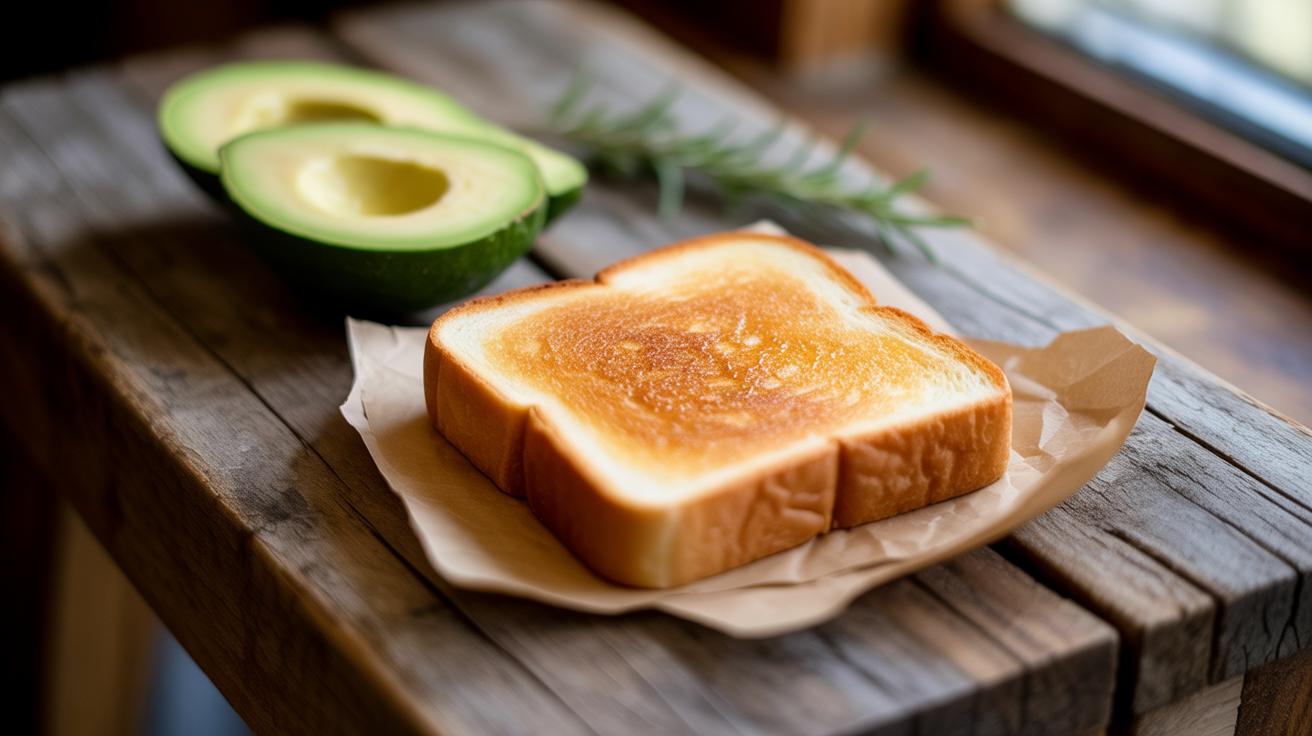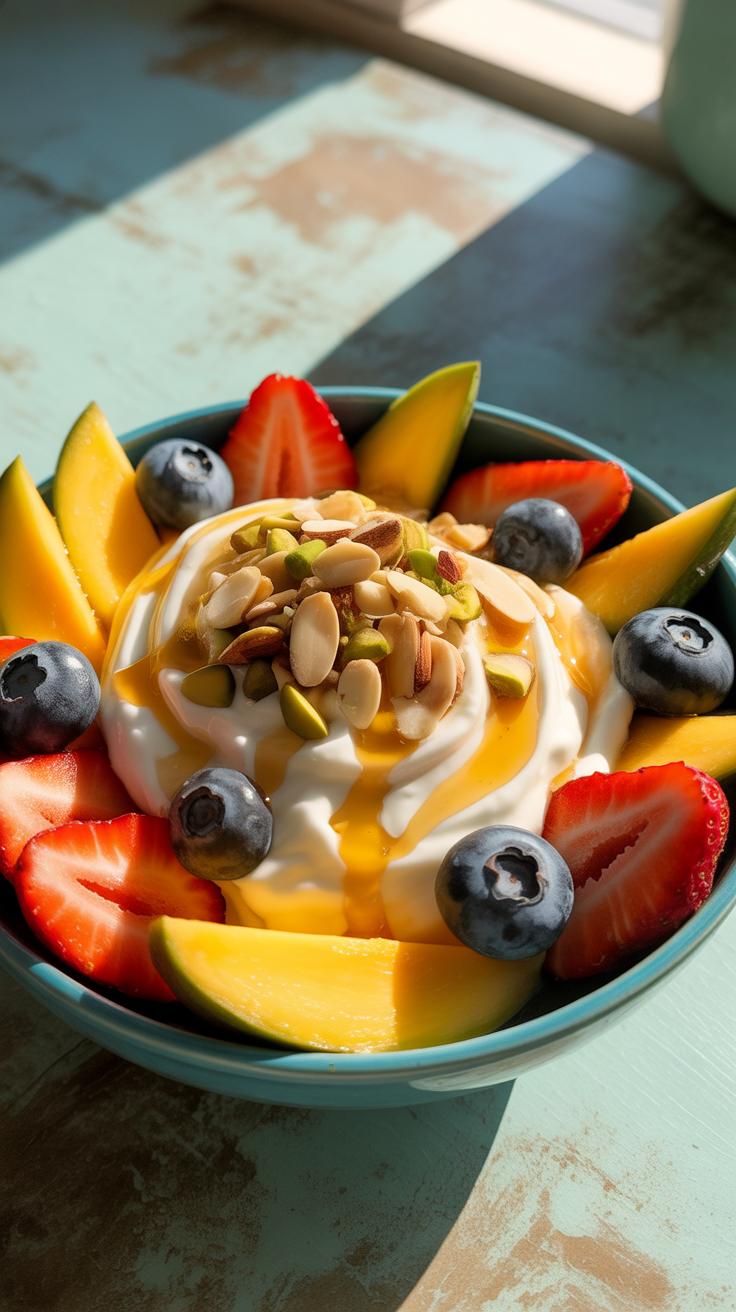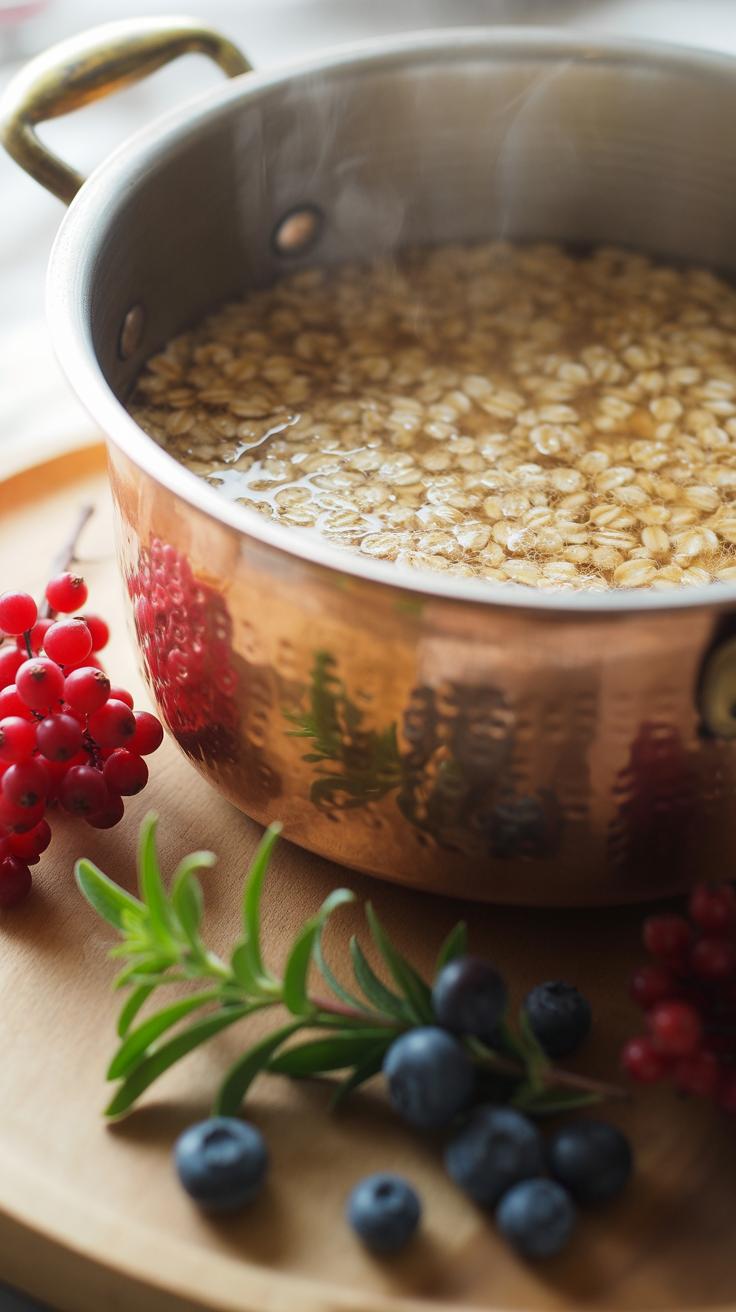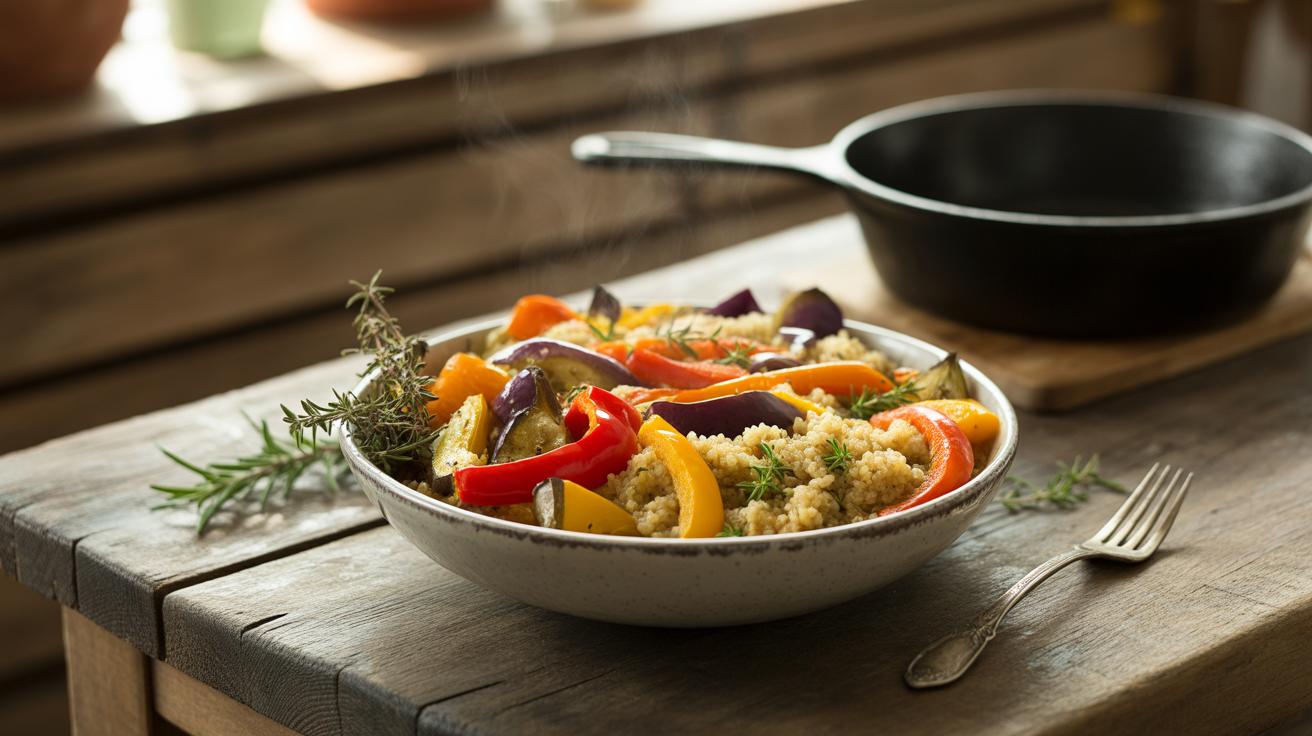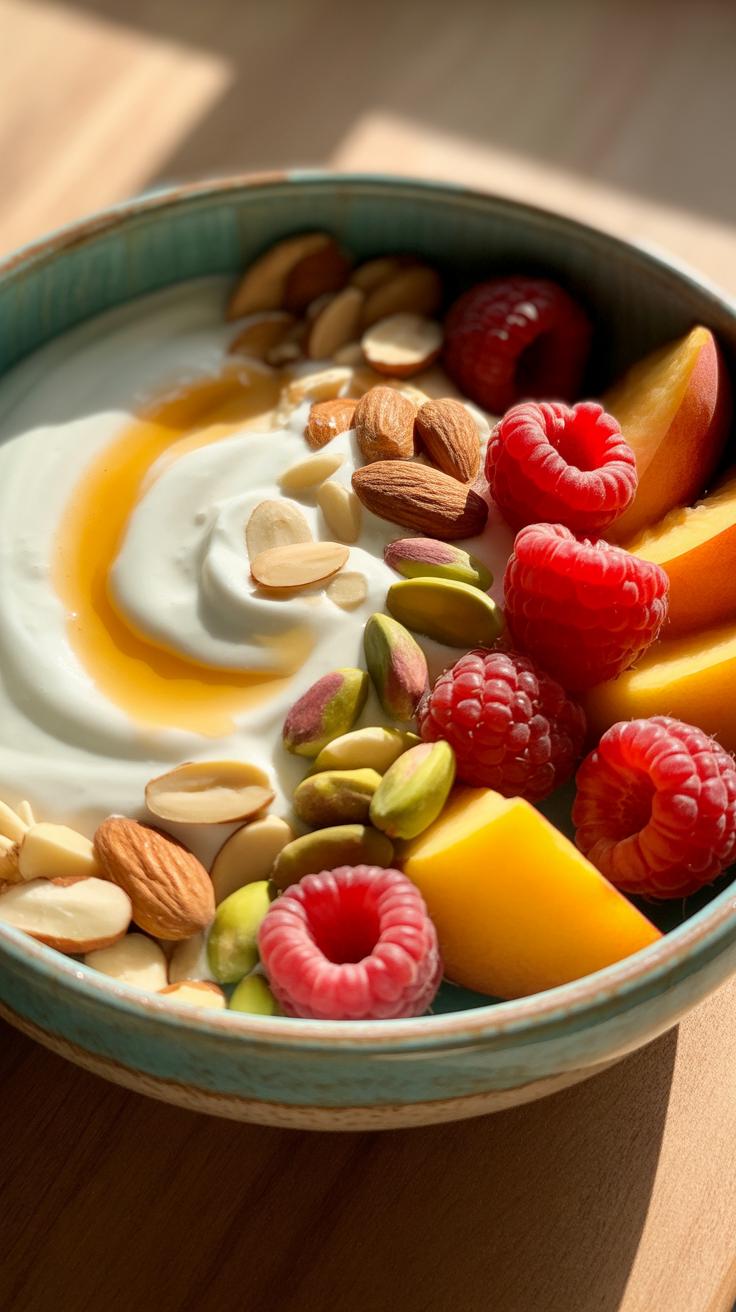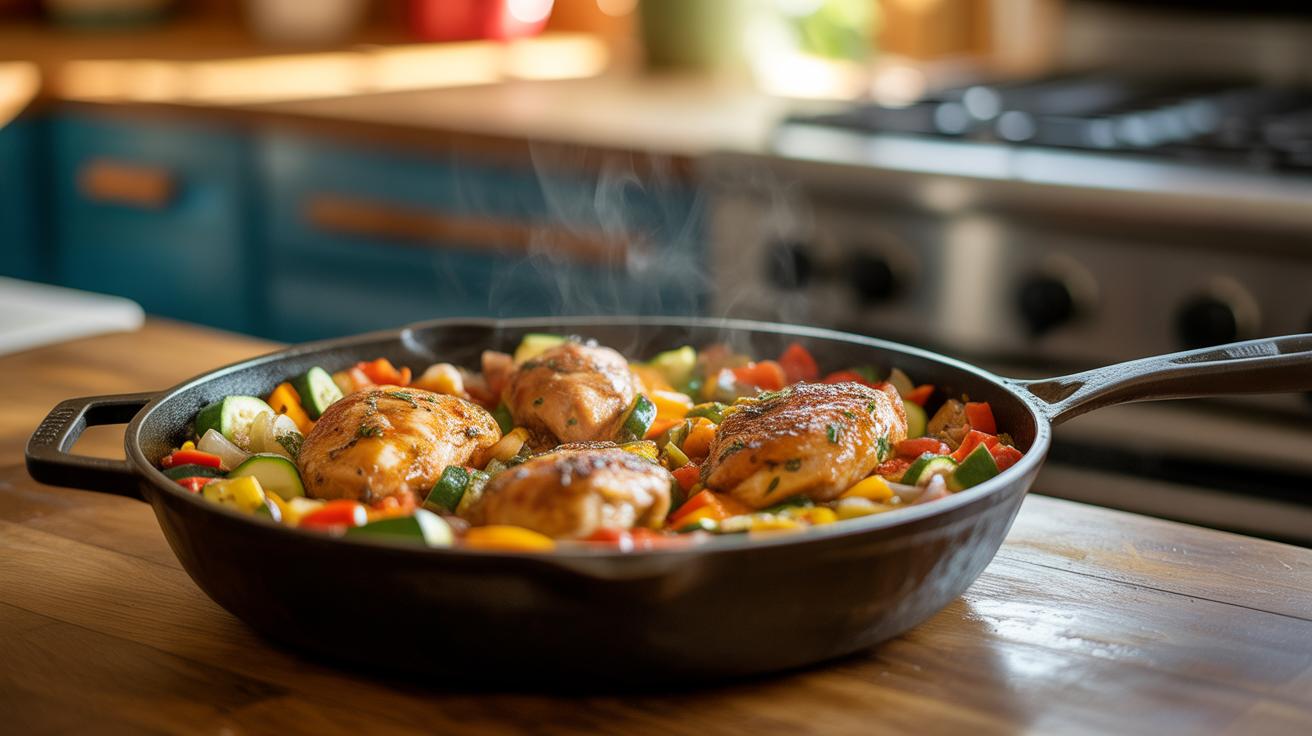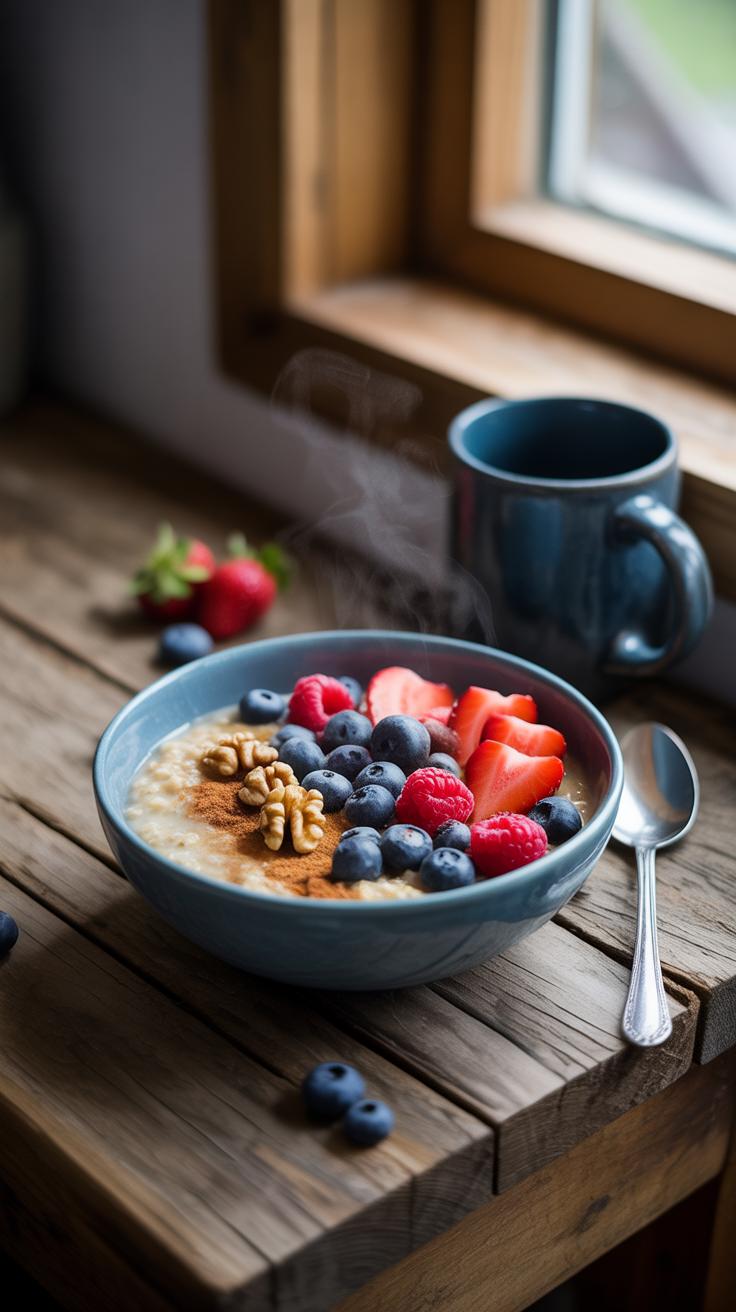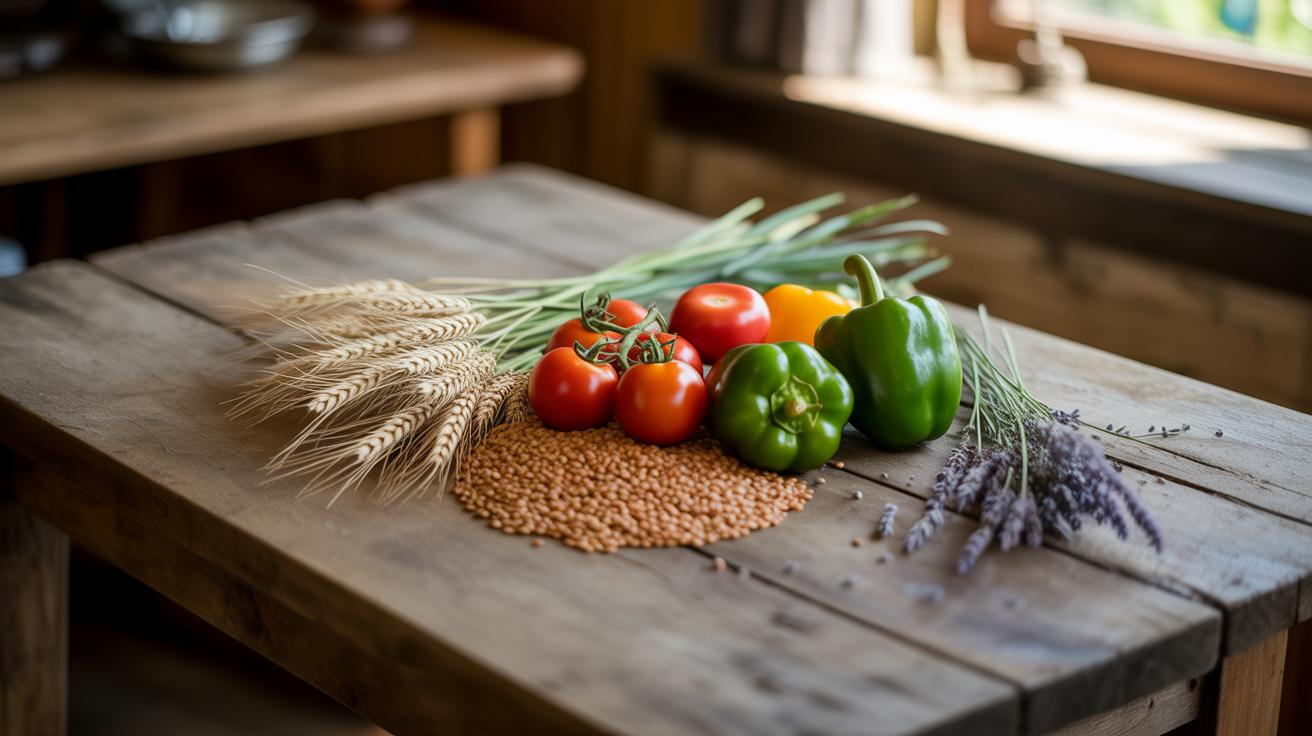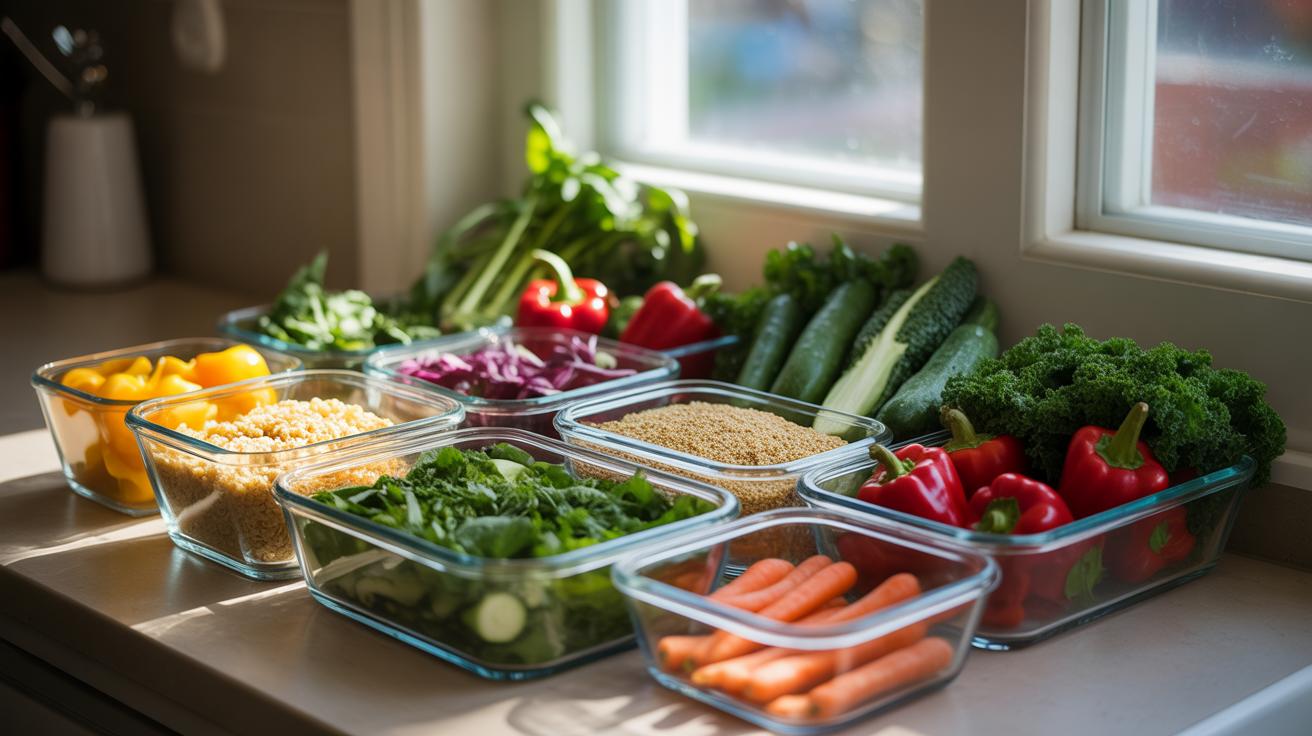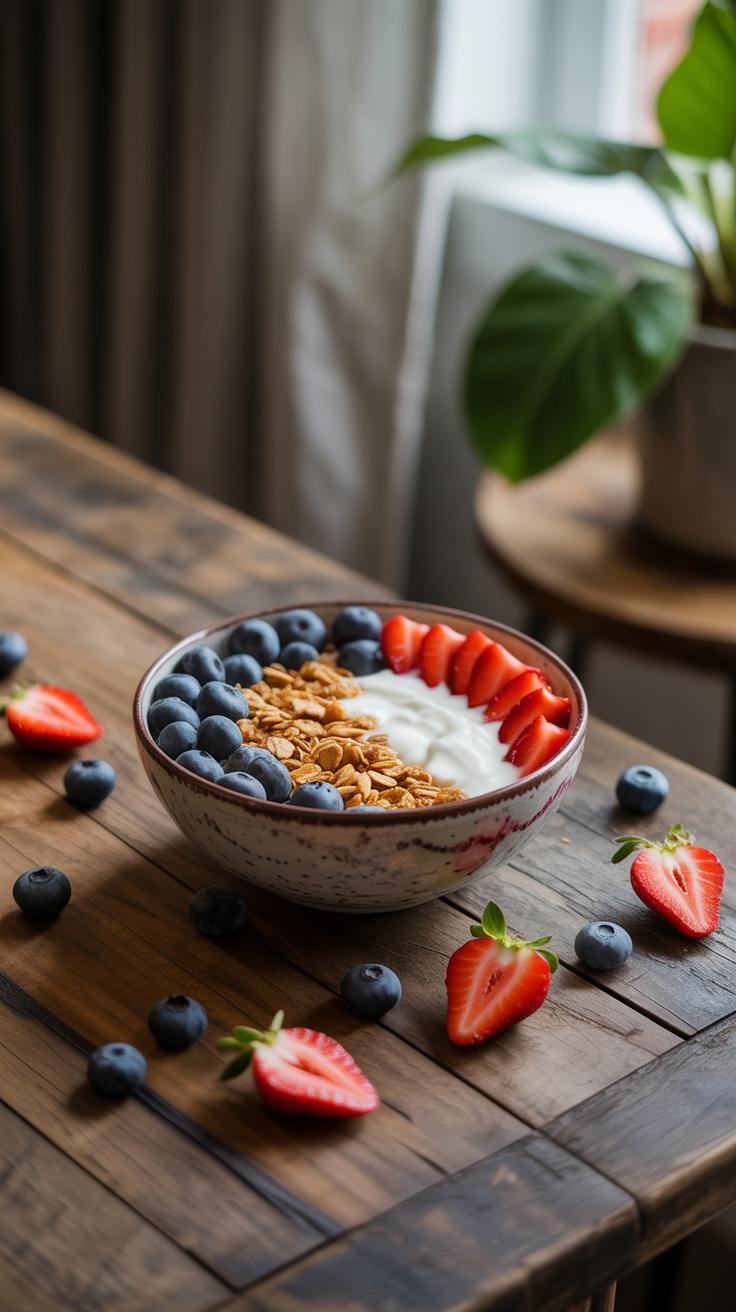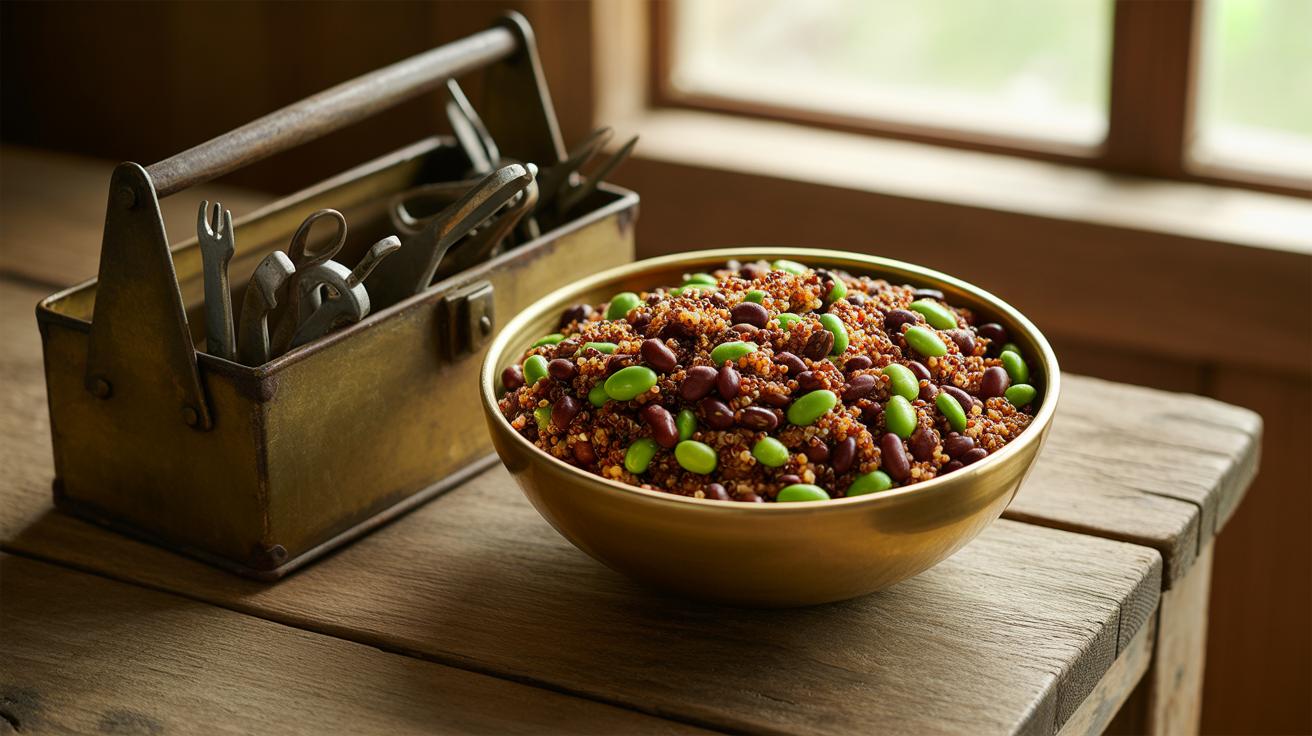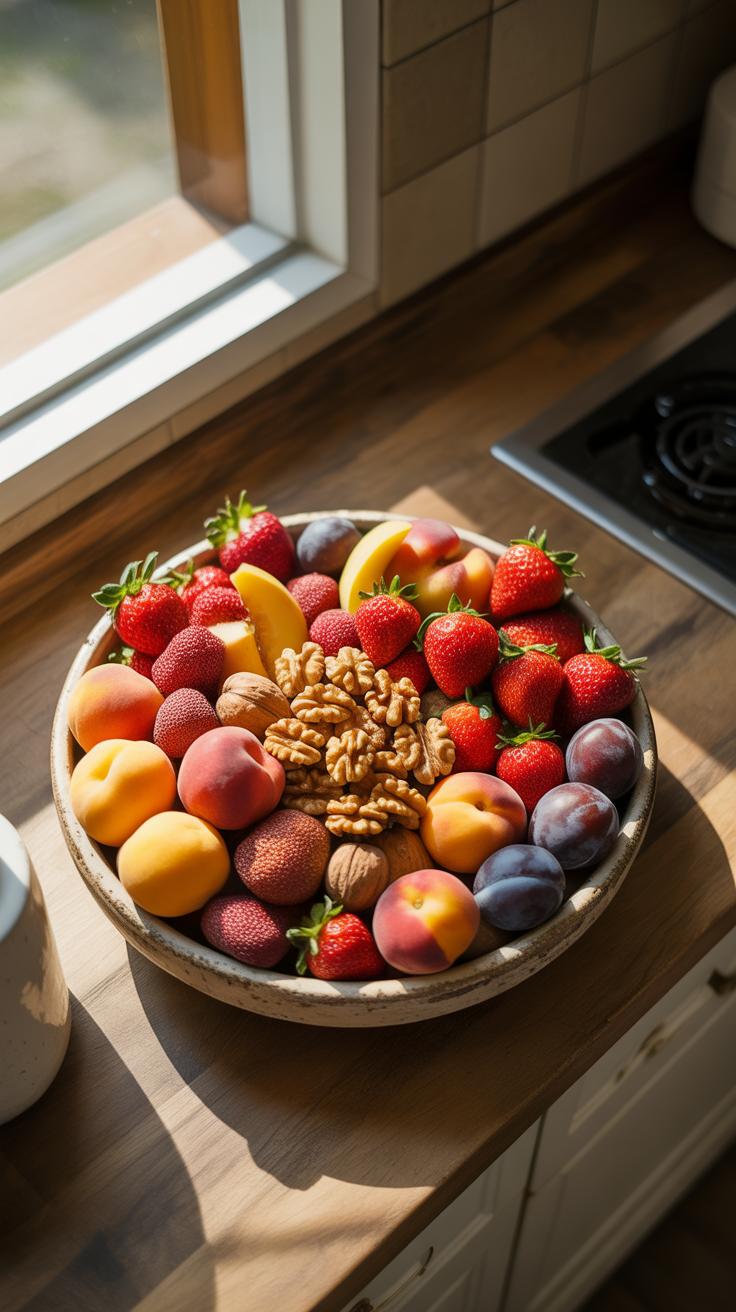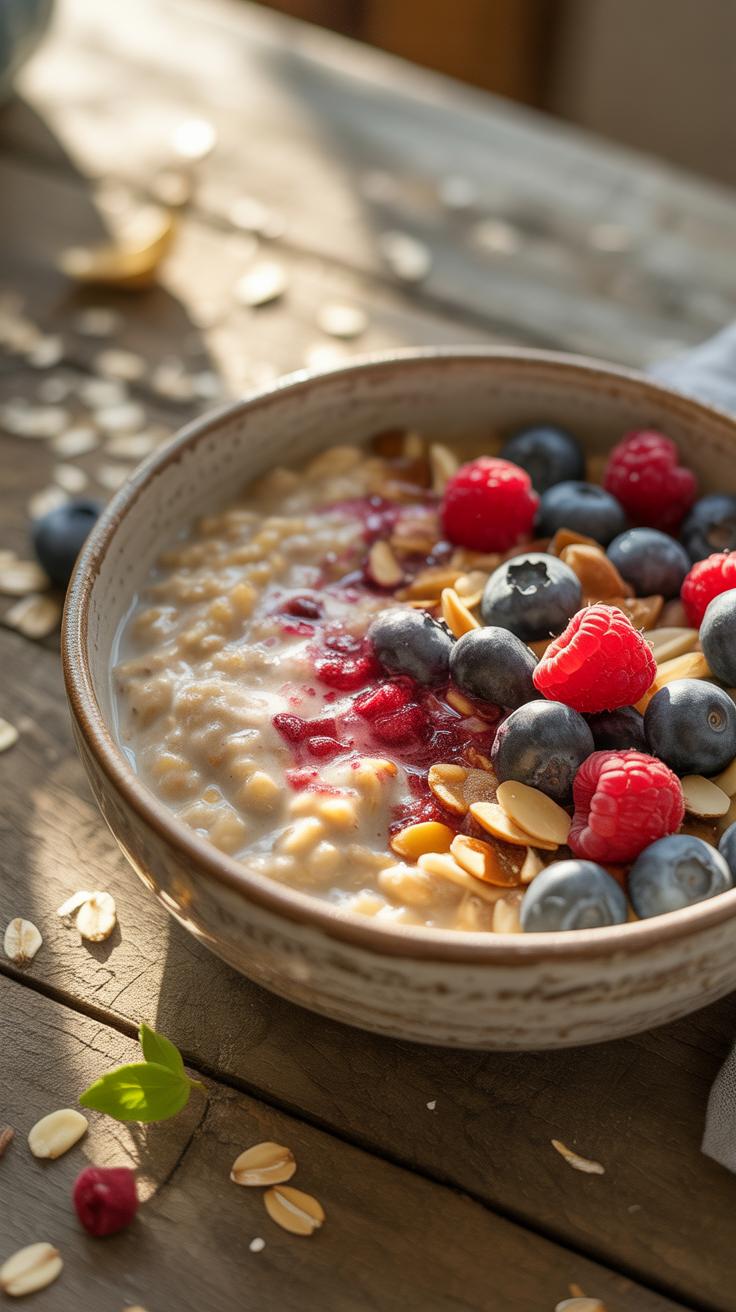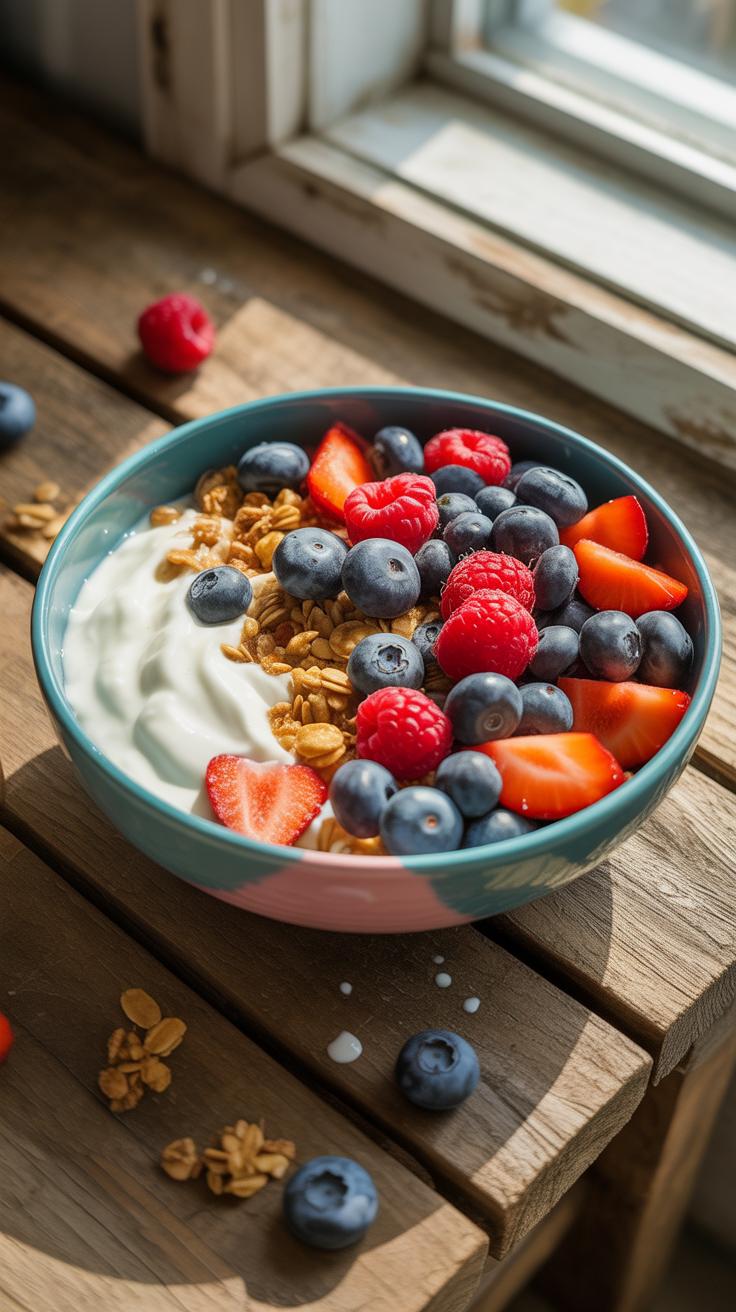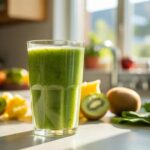Introduction
Starting your day with a healthy breakfast can set the tone for the entire day. Many people try to make healthy breakfast recipes but unknowingly make mistakes that reduce the nutrition and benefit of their meals. These mistakes can come from wrong ingredient choices, cooking methods, or portion sizes.
This article highlights 7 common mistakes that can ruin your healthy breakfast recipes. You will learn what these errors are and how to fix them. Understanding these pitfalls will help you create breakfasts that not only taste good but also fuel your body effectively.
Recognize Common Breakfast Errors
Choosing Unhealthy Ingredients
One common mistake with healthy breakfast recipes is relying too much on processed or sugary ingredients. For example, swapping out whole fruits for fruit-flavored yogurt packed with added sugars might seem harmless, but it undermines the effort to start the day well. People often think granola bars or flavored cereals are health foods, yet many contain hidden sugars and preservatives that don’t belong in a truly nutritious meal. Sometimes, it’s tempting to grab convenience items that look healthy on the label but don’t really nourish your body.
Maybe you’ve felt energized after breakfast but felt a crash later—this can happen when the carbs are refined or overly sweetened. It’s not just about avoiding sugar; processed ingredients can reduce fiber and essential nutrients, weakening your breakfast’s impact. Choosing fresh, whole foods might take more effort but usually pays off in sustained energy and better digestion.
Ignoring Portion Control
Another mistake is overlooking how much you eat. Some people think a bigger breakfast means a healthier breakfast, but eating too much can make you sluggish or uncomfortable. On the other hand, eating too little can leave you hungry an hour later and disrupt your focus.
Portion control isn’t about strict measuring or dieting but about being mindful. What feels “right” varies between individuals, but there’s a wide range where energy and satisfaction balance well. For instance, stacking your plate with more vegetables and moderate protein helps keep you full longer without overdoing it.
Have you ever wondered if your breakfast is just “enough”? Sometimes I find myself questioning if I ate too little or too much—there isn’t always a clear answer. The key is learning to listen to your body, but that takes practice and patience.
How Cooking Methods Impact Health
When it comes to breakfast, how you cook your food can change its nutrition quite a bit. Frying, for example, often sneaks in extra fat and calories that you might not expect. You might think a quick scramble or fried egg is harmless, but those added oils or butter pile up. That daily added fat? It can quietly throw off your balanced start.
Think about the difference between a fried egg and one poached or boiled. The boiled egg keeps its protein intact without extra grease. Frying can also create compounds you don’t want in your breakfast, like acrylamide when starchy foods get too hot. Even small choices like this nudge your meal toward being less healthy.
On the flip side, methods like steaming and boiling tend to preserve more nutrients. Steaming veggies—for example, spinach or asparagus—keeps much of their vitamin C and folate that might vanish with heavy cooking or frying. Boiling eggs or even oats gently cooks the food without breaking down key vitamins too much.
That said, boiling can sometimes leach water-soluble nutrients if you’re not careful. So, maybe don’t discard your cooking water; soups and broths are a clever way to retain those nutrients instead of tossing them away.
Would you choose frying because it’s fast and tasty, even if it costs a bit nutritionally? Or could you experiment with steamed or boiled options and find a new favorite way? The method you use does matter more than you might realize.
Swap Ingredients For Nutrition
When you look at many breakfast recipes, it’s easy to stick to the usual staples — white bread, sugary cereals, or plain pancakes. But making simple swaps can make a big difference in your morning meal’s nutritional value. For example, choosing whole grains over refined grains isn’t just about fiber — it’s also about vitamins like B-complex that often get stripped away during processing.
Think about swapping out white bread for whole-grain toast or using steel-cut oats instead of instant flakes. These whole grains slow digestion, which helps keep your energy steady and avoids the mid-morning crash you might be used to.
Another easy adjustment: adding fresh fruits. Maybe you already toss a banana on your cereal, but what about mixing berries into pancakes or layering apple slices on your toast? They boost vitamins and bring antioxidants to the table, giving your body little defenses it might not get otherwise.
It’s worth questioning whether skipping fruits or sticking to refined grains really serves your goals. Sometimes I find myself falling back into old habits, but a quick swap here or there makes the meal feel lighter, a bit more purposeful. Give it a try. What’s stopping you from making these swaps tomorrow morning?
Why Protein Matters Early
Eating protein at breakfast isn’t just a trend; it really makes a difference in how you feel through the morning. Protein helps keep energy steady and keeps hunger at bay longer than just carbs or fats alone. Think about mornings when you skip protein—you might notice that mid-morning slump or that sudden urge to snack on something not-so-healthy. That sense of fullness? Protein plays a big role in that, slowing digestion and slowing blood sugar spikes.
Getting some protein early on can also influence your focus and mood. Some people find they handle busy mornings better when their breakfast includes eggs, yogurt, or nuts versus cereal alone. It sets a tone for the day—but it doesn’t mean you have to overdo it. Small amounts work, too. The key is not to neglect it entirely and expect to sail through without any hunger pangs.
Select Lean Protein Sources
When you think about lean proteins for breakfast, these options come to mind:
- Egg whites or whole eggs (if you’re comfortable with fats)
- Low-fat Greek yogurt or cottage cheese
- Turkey or chicken breast slices
- Plant-based options like tofu or tempeh
- Nut butters in moderation—peanut or almond
- Legumes like lentils or beans (maybe less traditional for breakfast, but worth considering)
These sources tend to give you protein without excess saturated fat or calories. Plus, they mix well with fruits, veggies, and whole grains for balanced meals. If you’re like me, sometimes it’s tempting to go for convenience, but these choices usually don’t sacrifice nutrition for speed.
Avoid Sugary Breakfast Proteins
Now, those protein bars and powders marketed for breakfast can be misleading. Many pack in sugar to make them taste better, which defeats the purpose. You want to fuel up, not cause a sugar crash later. It might surprise you how much sugar lurks in some “healthy” options. Plus, some powders rely heavily on artificial sweeteners or fillers, which might not feel great in your stomach or help fullness.
Instead of defaulting to the bar or shake, try real foods you can chew. That physical act of eating helps with satiety, something powders don’t always do well. It’s a trade-off worth thinking about, especially if you’ve felt wired then hungry soon after those quick fixes.
Build Balanced Breakfast Plates
When you put together your breakfast plate, think about mixing carbohydrates, proteins, and fats in a way that feels manageable, not complicated. Each plays its part. Carbs give you quick energy, which is what your body craves after fasting overnight. Proteins keep you feeling full and support muscle repair. Fats, meanwhile, help absorb nutrients and keep things running smoothly.
You don’t need to pile on huge amounts of each, just enough to avoid the mid-morning crash many of us know all too well. A simple example: oatmeal (carbs), topped with a spoonful of nut butter (fat), and some Greek yogurt or a boiled egg (protein) can work wonders. It might sound basic but balancing these components helps your body get what it needs right away, without overloading you.
Carbs For Quick Energy
Starting your day with carbohydrates can jumpstart your metabolism. They break down fast and provide fuel to your brain and muscles. But not all carbs are created equal. Simple carbs like sugary cereals give you a quick spike, then a crash that makes you reach for more food sooner than you’d like.
Look for carbs that offer more than just quick energy—those with fiber. Think whole grains like oats, quinoa, or whole wheat bread. Fruits work too, especially when paired with protein or fat to slow absorption a bit. Honestly, choosing good carbs can be a bit confusing, but a good rule I follow is picking foods that feel substantial and digest slowly enough so I’m not starving by mid-morning.
Incorporate Healthy Fats
Fats don’t just taste good—they also keep your energy steady and help vitamins do their job. Not all fats are equal, though. For breakfast, try to include sources like avocado, nut butters, seeds (like chia or flax), or a small handful of nuts. These fats can improve satiety—meaning less tempting snacking later—and support brain function.
For example, adding half an avocado to your toast or stirring chia seeds into your smoothie might feel like a small change, but it actually makes a difference. It’s easy to avoid fats in the morning because we often think they’re heavy or slow us down, but the right kinds can leave you feeling satisfied and ready to face the day.
Avoid Sugary Breakfast Cereals
Popular breakfast cereals often promise a quick and easy start to the day. But many of these options pack more sugar than you might guess. It’s tempting to grab colorful boxes or those labeled “kids’ favorite,” yet the sugar content can be surprisingly high—even in cereals marketed as healthy.
Learning to read nutrition labels closely is key. Look for cereals with less than 5 grams of added sugar per serving. Check the ingredient list for names like cane sugar, corn syrup, or maltose. Sometimes cereals claim to be “low fat” but compensate with extra sugar, which isn’t a real win. Have you noticed how some cereals listed as “whole grain” still slip in sugar at the top of the list? That’s a red flag.
Rather than sugary options, consider oats or simple porridge. Oats offer slow-releasing carbs that keep you fuller longer. Unlike sugary cereals, they provide fiber, protein, and important minerals without the sugar spike. Making porridge is straightforward—just oats, water or milk, and a pinch of salt. You can add fresh fruit or nuts for taste instead of relying on sweetened cereals. It might not be flashy, but porridge fuels your morning better—if you’re willing to give it a try.
Plan Your Morning Meals Weekly
Planning your breakfasts ahead of time can really change the way you start your day. When you don’t think about what you’re going to eat in the morning until you’re already hungry, it’s easier to grab whatever’s quick—even if it’s not the healthiest. So, having a plan in place helps dodge those last-minute snaps at breakfast bars or sugary cereals.
Try mapping out your breakfast options for the whole week. Pick recipes you know work for your schedule and your taste buds. Maybe one day it’s oatmeal with fruit, another day a veggie omelette, or yogurt with nuts. Planning this up front makes mornings less stressful and keeps your goals on track, though sometimes I still find myself swapping days around… life happens.
Create A Shopping List
Once you know what you’ll be eating, jot down the ingredients—ideally in one place like your phone or a notepad. A focused shopping list stops random buys that don’t support your breakfast goals. Start with staples that keep well and fit multiple recipes:
- Whole grains like oats, quinoa, or whole-wheat bread
- Fresh and frozen fruits and veggies
- Eggs or plant-based protein options
- Milk or milk alternatives
- Nuts, seeds, and healthy fats like avocado
Having this list ready makes grocery trips faster and cuts down on impulse purchases. Plus, it slightly nudges you toward more mindful food choices… though sometimes I do add a treat or two—because, well, who doesn’t want a little something extra now and then?
Batch Cook Breakfasts
Batch cooking your breakfasts sounds like a hassle, but it’s really about saving time and preserving your good intentions. Prepare a few servings of meals like egg muffins, overnight oats, or veggie stir-fries in advance. Store them in the fridge or freezer, so on busy mornings you just grab and go.
For instance, I make a big tray of baked oatmeal or egg bites on Sundays. They keep well and taste better than I expected after reheating. This approach means you can stick to healthy choices without spending time every morning in the kitchen. Sure, sometimes you might get bored of repeating meals, but that’s a fair trade-off for consistent nutrition.
Have you tried batch cooking? What worked or didn’t for you? Planning, shopping, and prepping on your own schedule could make healthy breakfasts feel less like a chore and more like a habit you can actually maintain.
Check Your Breakfast Habits
Track What You Eat
Start by jotting down everything you eat for breakfast each day, for one whole week. Use a simple notebook or an app—whatever feels easier. Don’t just list the foods but include portion sizes and any drinks you have, even that quick coffee or juice. Writing it down helps you see patterns you might miss otherwise. You might realize you rely on sugary cereals more than you thought or skip breakfast altogether some mornings.
Tracking isn’t about judging yourself. Think of it as gathering clues. Some days you’ll eat well; others, maybe less so. That’s normal. But over time, you’ll notice which habits are helping and which might be holding you back. For example, seeing repeated intake of highly processed snacks might prompt you to swap them for whole fruits or nuts.
Ask Key Questions
Once you’ve tracked a week, take a moment to ask yourself a few questions. They don’t need answers right away, but reflecting helps you understand your choices better:
- What makes me choose this breakfast? Convenience? Taste? Something else?
- Do I feel satisfied and energized after eating, or still hungry?
- Are there times when I skip breakfast, and why?
- Am I including enough protein, fiber, or healthy fats?
- Do I vary what I eat, or is it mostly the same thing every day?
- How do my morning meals affect my mood or focus during the day?
It’s okay if the answers feel unclear or if you notice contradictions. For instance, you might crave something sweet but know it’s not the healthiest choice. That awareness alone is a start. It helps you decide what small changes could feel realistic for you moving forward.
Compare Store Bought vs Homemade
Nutrient Differences
Store-bought breakfasts often come pre-packaged and processed, which usually means added sugars, preservatives, and less fiber. Think of those instant oatmeal packets or ready-made breakfast bars—they tend to contain ingredients that can sneakily lower the overall nutritional value. On the other hand, homemade breakfasts give you control over what goes in your meal. You can use fresh fruits, whole grains, and healthy fats, which usually means more vitamins, minerals, and fewer unnecessary additives.
That said, some store-bought items are fortified with extra vitamins. For instance, certain cereals might have added iron or B vitamins, which you might not add yourself at home. So, it’s not a completely clear-cut choice. But overall, homemade meals generally lean toward being more nutrient-dense and less processed.
Cost and Convenience Factors
Cost-wise, homemade breakfasts can save you money in the long run—bulk buying ingredients like oats, eggs, or frozen berries often turns out cheaper than buying individually packaged store items. Still, homemade can mean spending time shopping, prepping, and cleaning up afterward, which might feel demanding on busy mornings.
Store-bought breakfasts, meanwhile, offer undeniable convenience. You grab a package, maybe pop it in the microwave or eat it straight out of the box, and you’re done. But convenience often comes with a higher price tag per serving. Plus, it might leave you feeling less satisfied and reaching for a snack sooner.
So, is it worth spending extra minutes in the kitchen for better nutrition and savings? Or does grabbing a quick store item help you start your day without stress? It depends quite a bit on your lifestyle, priorities, and maybe how patient you feel before coffee.
Examples of Healthy Breakfast Recipes
Simple Oatmeal Bowl
Start with half a cup of rolled oats and cook them in water or unsweetened almond milk. Once soft, top the oats with a handful of fresh berries or sliced banana. Sprinkle a tablespoon of chopped nuts or seeds for some crunch and healthy fats.
Feel free to add a dash of cinnamon or a small drizzle of honey if you want a touch of sweetness, though this step can be skipped to keep sugar low. Avoid flavored instant oatmeal packets; they often hide unnecessary sugars and additives.
This kind of bowl can keep you full for hours, thanks to fiber and protein. Sometimes, I forget to add protein, but the nuts or seeds really help here. If you want to boost protein even more, toss in a spoonful of Greek yogurt or a little nut butter. It’s simple, quick, and tends to stick better to real hunger than sugary cereals.
Veggie Omelet
Whisk two eggs with a pinch of salt and pepper. Heat a non-stick pan and add a small splash of olive oil or butter. Toss in chopped vegetables like spinach, bell peppers, and mushrooms—whatever you have handy works well.
Cook the veggies for a couple of minutes before pouring in the eggs. Let the eggs set but don’t overcook; you want the omelet moist, not rubbery. Folding it gently ensures a nice texture.
This meal is filling and provides a good balance of protein and fiber. I sometimes wonder if adding cheese is a mistake or not. It does enrich the flavor but can add saturated fat, so maybe just a light sprinkle if you want. Also, skipping the toast or sugary sides keeps it cleaner and avoids loading up on empty carbs.
Conclusions
Healthy breakfasts are possible when you avoid common mistakes. By choosing the right ingredients and cooking methods, you ensure your first meal of the day supports your health. Small changes can improve nutrition and taste without extra effort.
Now you know the pitfalls to watch for in your breakfast recipes. Use the tips provided here to improve your meals. Your energy and well-being will thank you for it. Start making better breakfasts today and see the difference.

